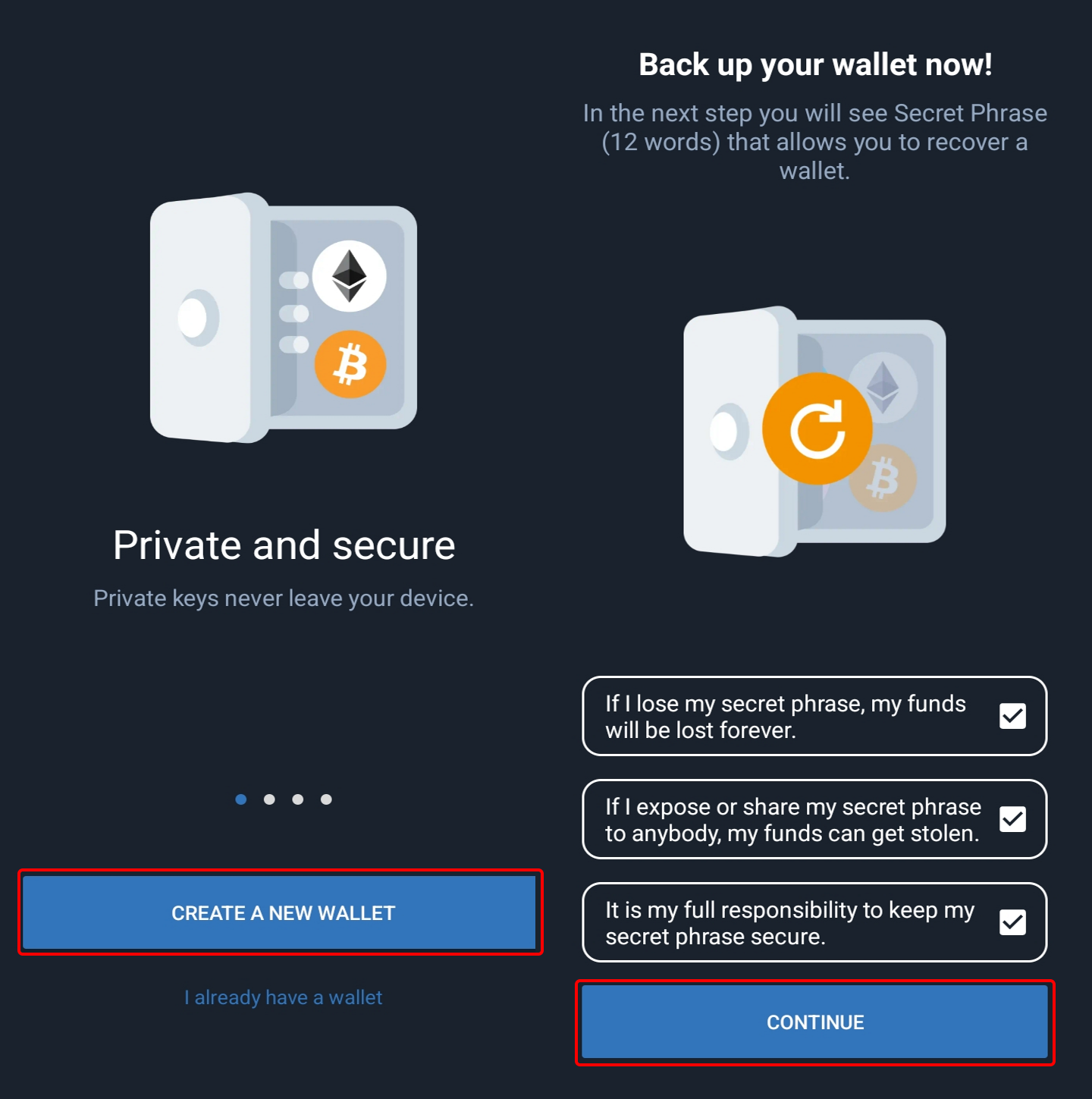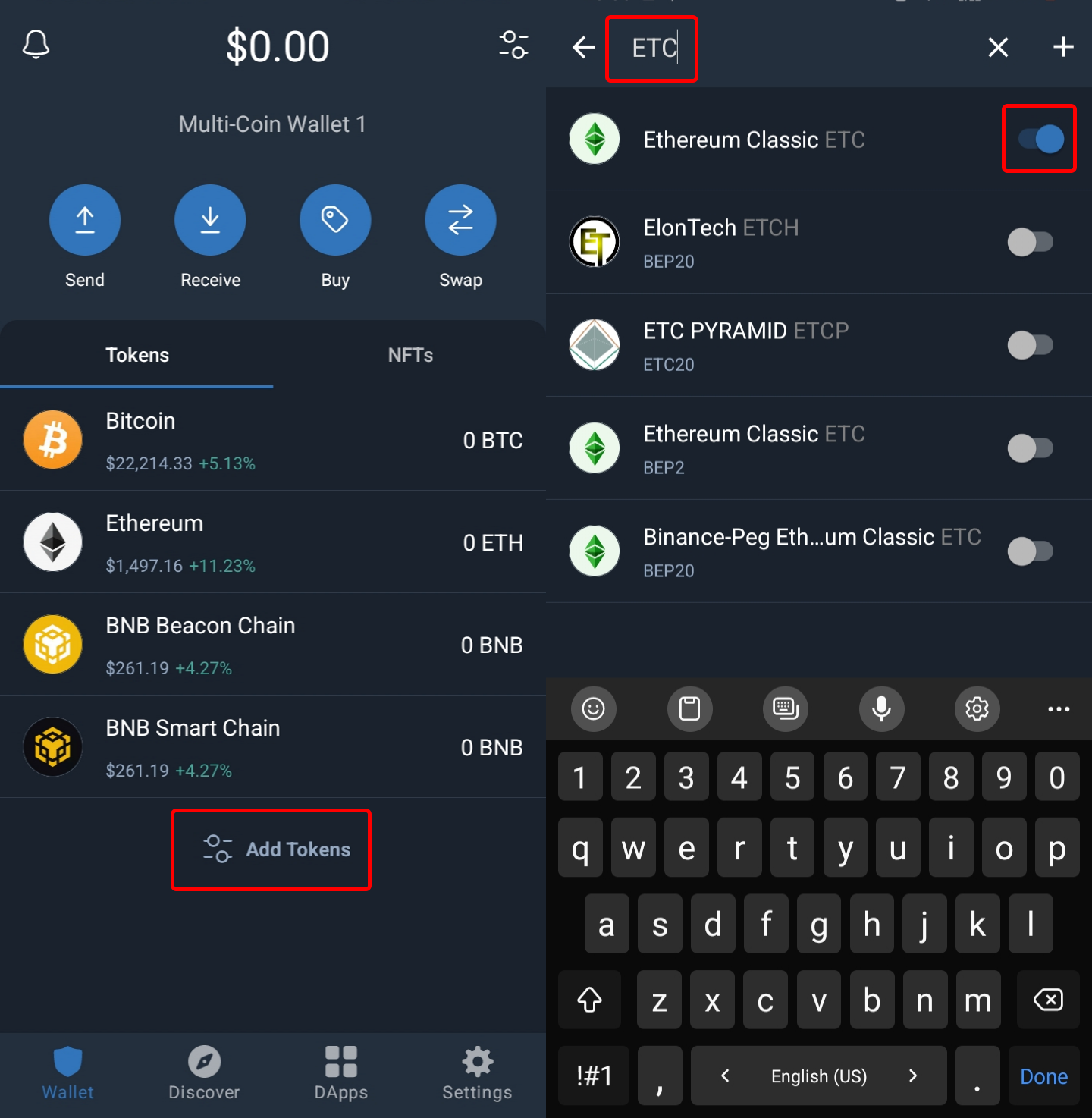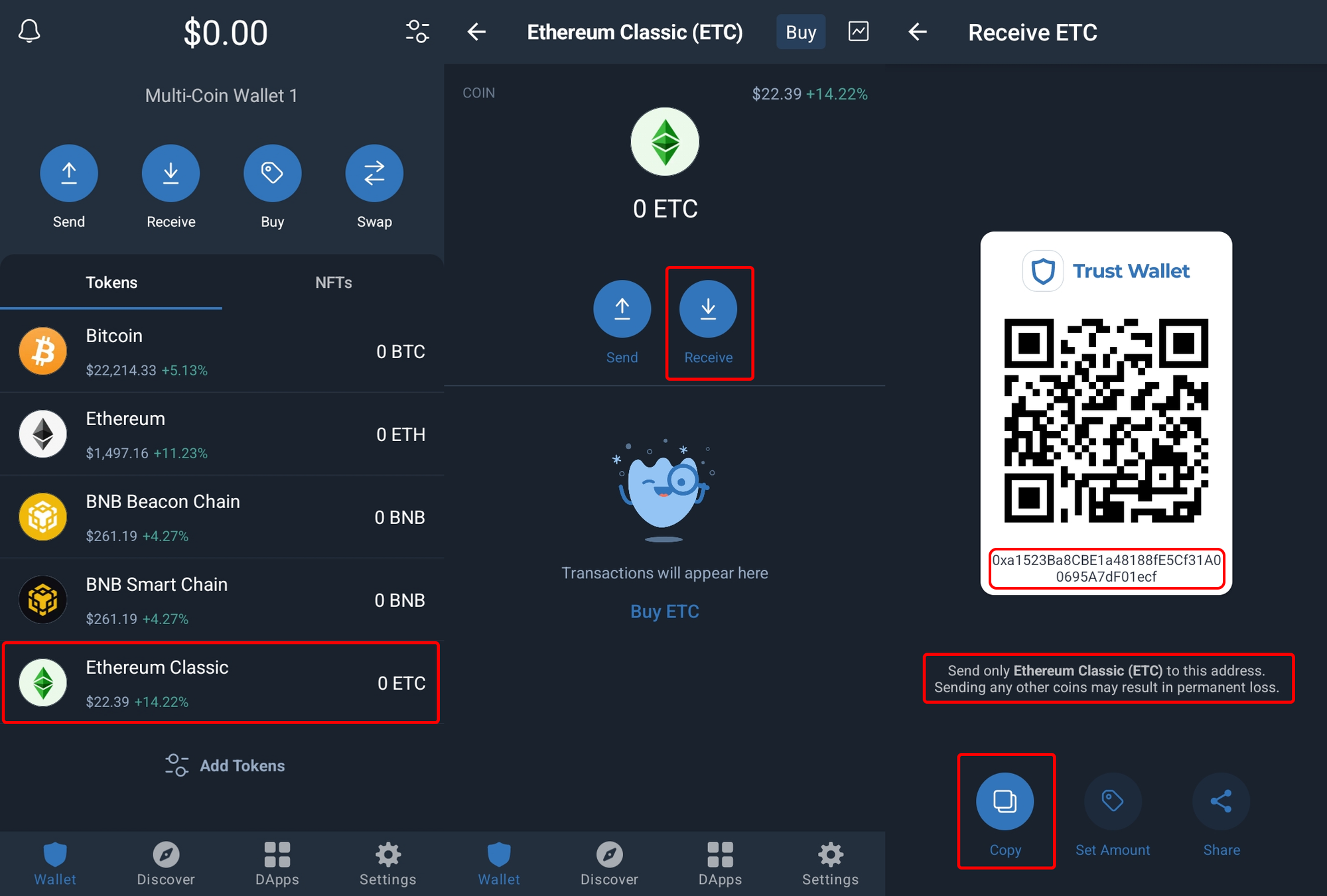How to create a cryptocurrency wallet
15/12/2022
Step one — choose the type of wallet
There are two main types of cryptocurrency wallets.
- Cold — offline wallet
- Hot — online wallet
Cold wallets store cryptocurrency offline without access to the internet, for example, on a particular device or an ordinary USB drive. To access money, you must do certain things in the real world.
Hot wallets are used for storing small amounts and for everyday use. Hot wallet keys are stored on your computer or phone.
Each type has its pros and cons.
Cold ones are highly secure but not very convenient to use. These wallets are used when you want to keep large amounts of cryptocurrency in a safe place.
Hot wallets allow you to store different coins in one place. They are always at your fingertips, on your smartphone, or in your browser. They are multi-currency, allow you to make quick transfers, and buy and sell cryptocurrency in seconds! But their security is lower.
Hot software wallets are usually used for mining — it's fast and convenient.
Step two — choose where to store it
Most cryptocurrencies work with multicurrency software wallets Metamask.io, MyEtherWallet, Trust Wallet, Coinomi or Guarda.
You can trade your crypto on online exchangers.
We recommend following reliable exchangers: Binance, Gate.io, MEXC, CoinEx, KuCoin, ByBit.
- For Bitcoin BTC, we recommend Trust Wallet, Bitcoin Core
- For Fractal Bitcoin FB, we recommend UniSat Wallet. (Check the detailed instruction)
- For Bitcoin II BC2, we recommend BitcoinII Core
- For eCash XEC, we recommend Cashtab Wallet. (Check the detailed instruction)
- For DigiByte DGB, we recommend Trust Wallet, DigiByte Core. (Check the detailed instruction)
- For Bitcoin Cash BCH, we recommend TrustWallet, Bitcoin Cash Node, Electron Cash. (Check the detailed instruction)
- For Zcash ZEC, we recommend Trust Wallet, ZecWallet Lite
- For Litecoin LTC, we recommend Trust Wallet, Litewallet, Metamask.io (Check the detailed instruction)
- For Ethereum POW ETHW, we recommend Metamask.io (Check the detailed instruction)
- For Ethereum Classic ETC, we recommend Trust Wallet or Metamask.io (Check the detailed instruction)
- For OctaSpace OCTA, we recommend Metamask.io (Check the detailed instruction)
- For Radiant RXD, we recommend Photonic Wallet. (Check the detailed instruction)
- For Alephium ALPH, we recommend Extension Wallet. (Check the detailed instruction)
- For Kaspa KAS, we recommend Kaspa Online Wallet (Check the detailed instruction)
- For Tari XTM, we recommend Tari Android Wallet or Tari iOS Wallet. (Check the detailed instruction)
- For Quai QUAI, we recommend Pelagus Wallet. (Check the detailed instruction)
- For Iron Fish IRON, we recommend Node App Wallet or FoxWallet. (Check the detailed instruction)
- For Xelis XEL, we recommend Xelis Online Wallet. (Check the detailed instruction)
- For Conflux CFX, we recommend Fluent Wallet. (Check the detailed instruction)
- For Nexa NEXA, we recommend Otoplo or Nexa wallets (Check the detailed instruction)
- For Ergo ERG, we recommend mobile apps Ergo Wallet (Android) or Terminus Wallet (iOS). (Check the detailed instruction)
- For Ravencoin RVN, we recommend Trust Wallet, Dove Wallet. (Check the detailed instruction)
- For NeurAI XNA, we recommend Rebel Wallet. (Check the detailed instruction)
- For CloreAI CLORE, we recommend Vidulum Wallet. (Check the detailed instruction)
- For Karlsen KLS, we recommend Karlsen Online Wallet. (Check the detailed instruction)
- For Monero XMR, we recommend MyMonero Wallet. (Check the detailed instruction).
- For Zephyr Protocol ZEPH, we recommend Zephyr Wallet. (Check the detailed instruction)
- For Salvium SAL, we recommend Salvium Wallet. (Check the detailed instruction)
We do not recommend mining on exchange. If you choose mining on an exchange, you do so at your own risk. Not your keys - not your crypto!
Let’s create a multi-currency wallet that you will always have at your fingertips — Trust Wallet:
Download and install the Trust Wallet application on your smartphone from the app store.
Launch it, click "Create a new wallet”, enter a pin-code, and accept the terms and conditions of the wallet. Remember — you alone are responsible for your wallet's safety! You will receive a secret phrase — a combination of 12 words. Safely keep them in the same order as they appear on your phone screen. Losing them means losing access to your wallet!

Some coins are available by default. You can use them, remove unnecessary ones, or add necessary ones. Let's add ETC. Click on "Add Tokens"; enter "ETC" in the search bar; click on the switch to add a coin. Go back to the previous menu.

Finished! Your ETC Wallet is ready to use. Click on it in the coin list, press "Receive", and you will see your wallet address.

Use this address for mining. The payment from the mining pool will come to it. You also can transfer your coins to other wallets or exchanges.
Important!
- Save your secret phrase securely to access and restore your wallet. Losing it can lead to losing access to your wallet and money.
- Only a specific coin can be transferred to a created coin purse. This means that if you made a wallet for ETC — you could only transfer and mine ETC to it. You can't transfer any other coin. The money will disappear.
Step three — use your wallet for mining!
Regardless of where the wallet is registered — the wallet address can be used for mining.
Now the cryptocurrency from mining will be automatically transferred to that wallet as soon as it reaches the withdrawal limit you specified at the pool.
Can I mine to the address associated with the hardware wallet?
Yes, you can. However, some hardware wallets may have problems if there are too many transfers from mining. Check your wallet instruction, for example, Ledger.
Can I use a wallet obtained from an exchange for mining?
Yes, you can, but exchanges do not always welcome it. Also, check the minimum cryptocurrency input amounts on your exchange. If the transfer from the pool is less than the minimum set by the exchange — your money can disappear!